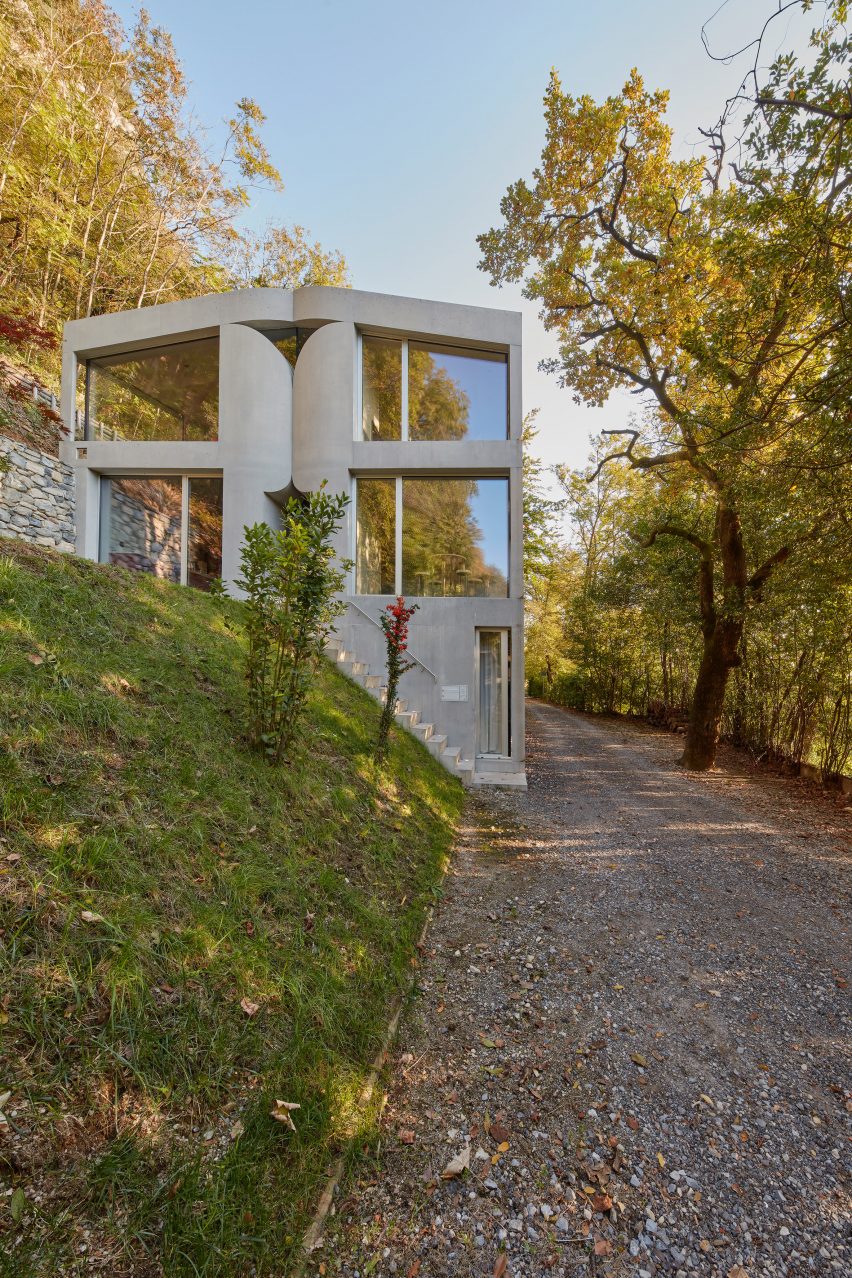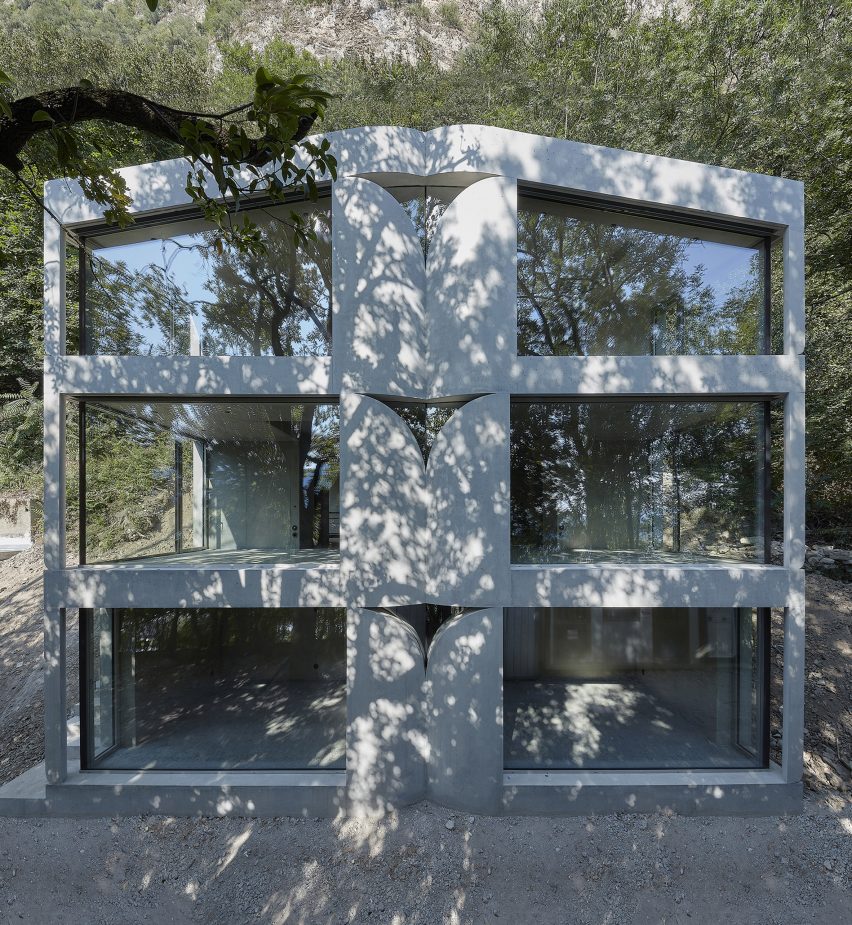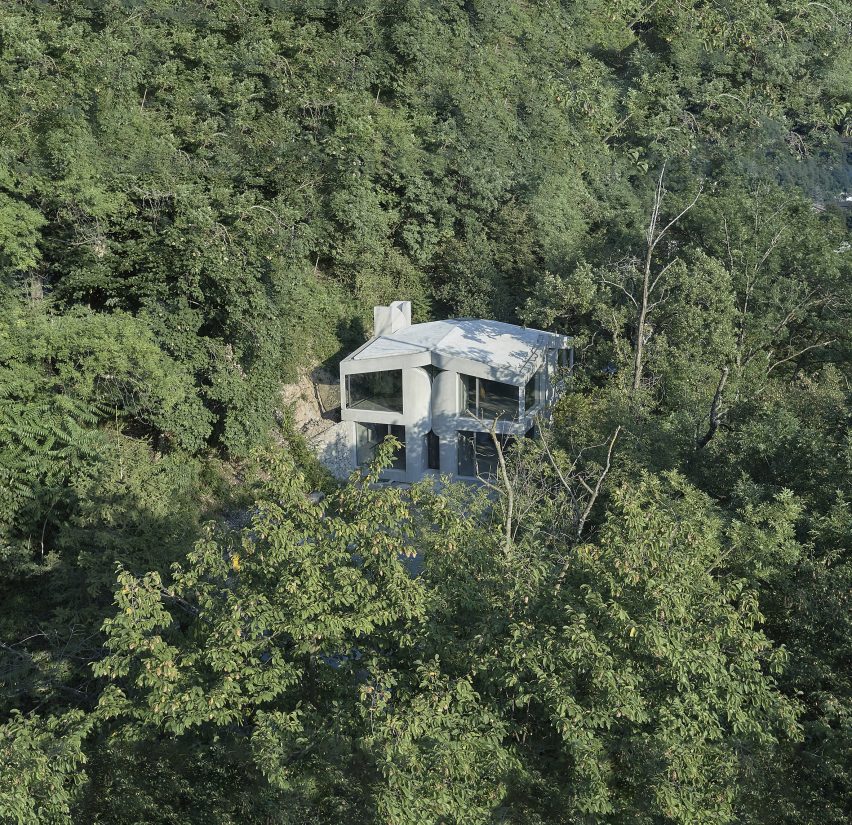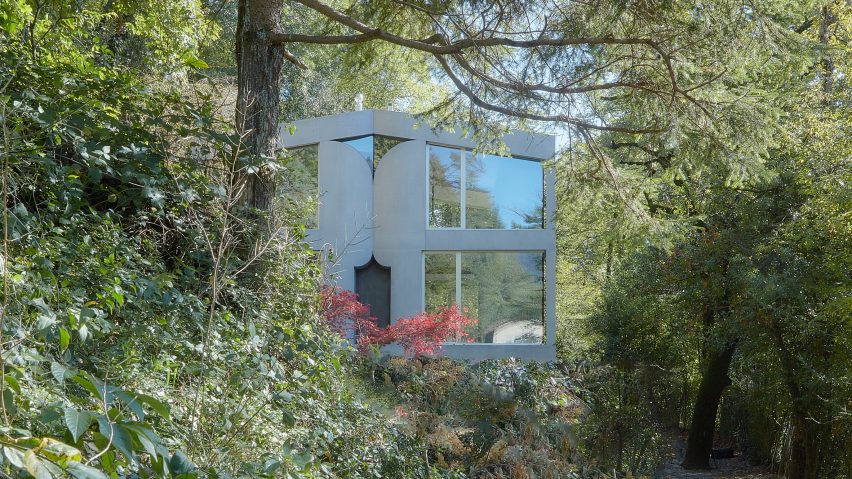
Referencing this history, the home was designed as what Celoria describes as a “massive primitive object embedded in the mountain”, centred around a large kitchen and dining room.
“This was the place where we used to go as children for lunch or dinner with friends or to sit in front of the fireplace and eat chestnuts,” Celoria told Dezeen.

“The project arose with the idea of maintaining this spirit of conviviality and designing a house as if it were a grotto in relation to the surrounding nature,” he explained.
House C is organised around four concrete cores along the edges of its square plan, each finished with wave-like sections of concrete wall.

Acting as giant, hollowed-out columns, these concrete forms house the home’s infrastructure and utilities, including a spiral staircase, bathrooms, utility rooms and a fireplace.
This frees up the rest of the floor plates to be column-free, allowing for unobstructed views through the full-height windows and glazed corners that overlook the landscape.


